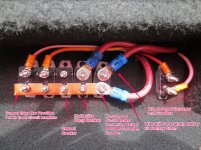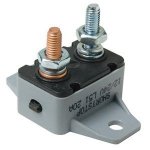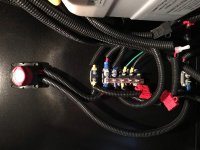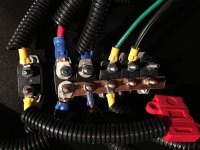Hi buggyboo16,
If you have a panel that looks like this,
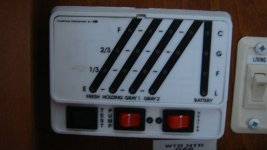
4 lights means fully charged. Except, if you're plugged into shore power, it's actually showing you the output of the Power Converter, not the battery. If you turn off the 120V AC circuit breaker for the Power Converter, or turn off the main circuit breakers, you'll get the battery reading.
The lack of power to the slides and jacks does suggest a drained battery. And you don't want to turn the battery cutoff to OFF while on shore power (only when in storage). When on shore power, the Power Converter changes 120V AC to 12V DC and keeps the battery charged. The Power Converter also supplies 12V to the fuses in your main fuse box, as does the battery.
What probably happened is that the 12V DC mini-circuit breaker near the battery has tripped and needs to be reset. That breaker is in the path between the Power Converter and the battery. When it trips, the battery doesn't get charged. And the battery will gradually drain. The classic symptom for this situation is that you unplug from shore power and all your interior lights immediately go out.
The mini-circuit breaker is one in a row of breakers connected by a copper buss bar, and usually covered by a red rubber boot. They're located near the battery. One breaker has a teeny-tiny reset button that's very hard to see. Check the pictures below. Your arrangement on the buss bar may be different, but look for the breaker with a thick wire on each side.
If you have a residential refrigerator, the inverter for the fridge might be sucking power. Normally with the Power Converter keeping the batteries charged, that's not an issue, and it makes sense to keep the inverter ON in case there's a power outage. But with that mini-circuit breaker tripped, the batteries aren't getting recharged and the inverter could be responsible for draining the batteries over that 2 week period.
If you have the residential refrigerator, there's a block diagram in our
Residential Refrigerator Guide that will help you understand all this. If not, take a look at our
12V Block Diagram and Diagnostic Guide.


